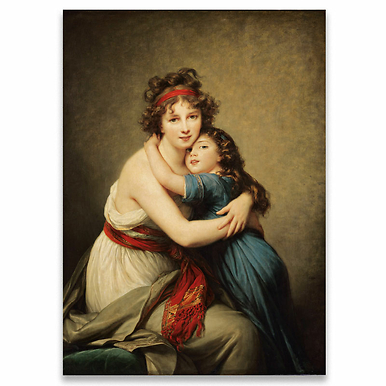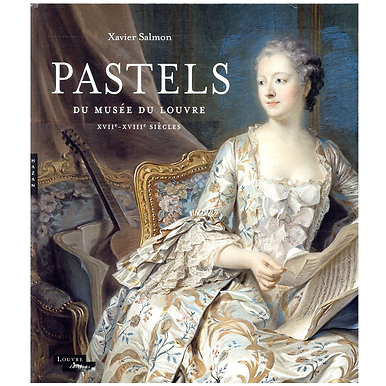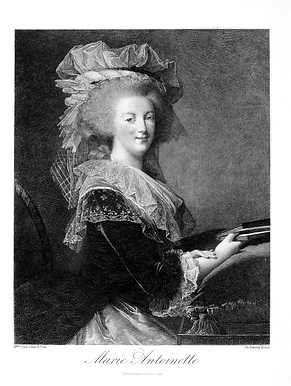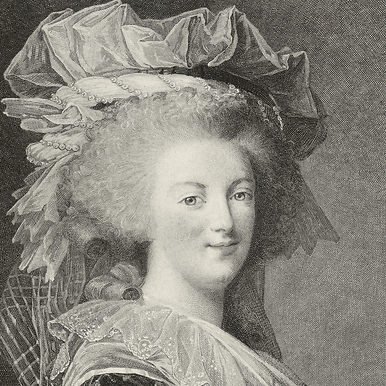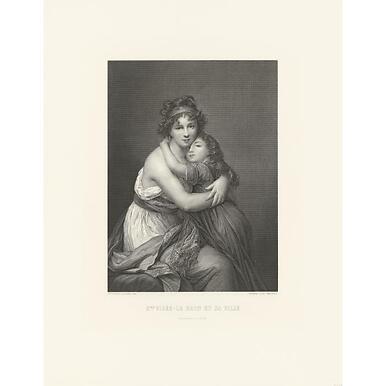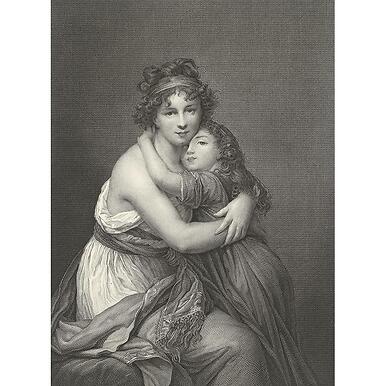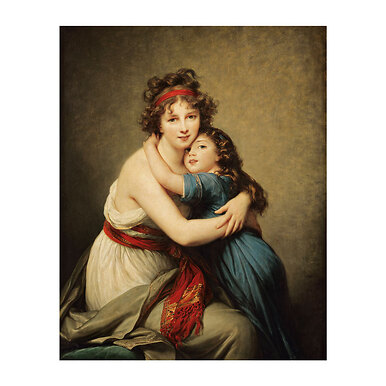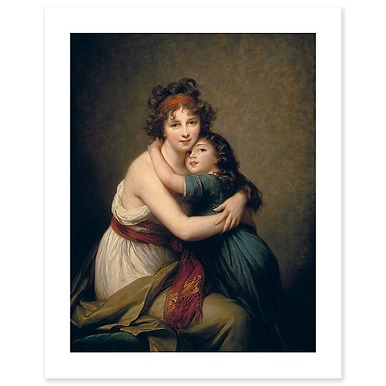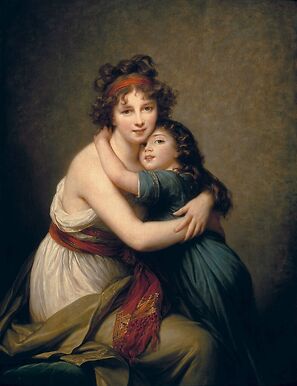Elisabeth Louise Vigée Le Brun
1755-1842Our selection
With the Ancien Régime and its Royal Academy coming to an end, she succeeded in supplanting most of her rival portrait artists. Vigée le Brun's desire to break away from the constraints imposed upon women artists allowed her to develop her own distinct techniques and aesthetic criteria. She mastered the science of colours and invented a whole range of poses and costumes that brought great variety to her portraits and improvisations. Marie Antoinette with a Rose (1783), exhibited in Versailles, is one of the most famous portraits of Marie-Antoinette.

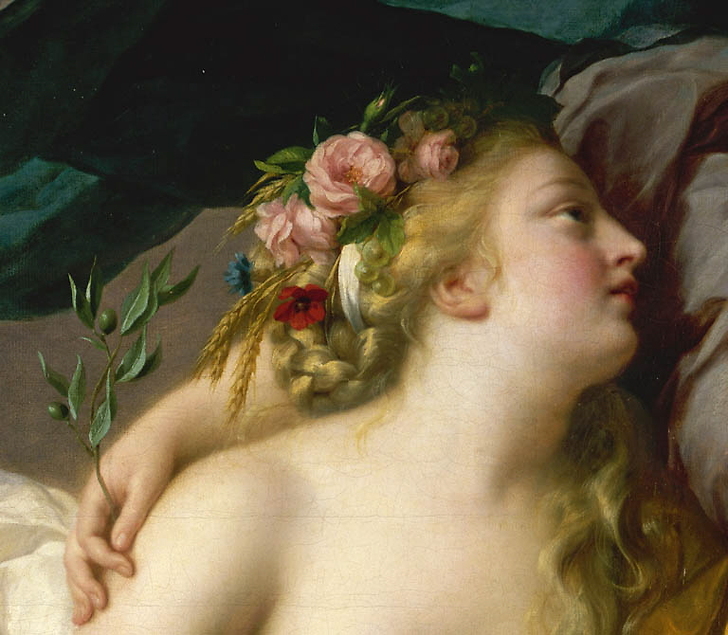
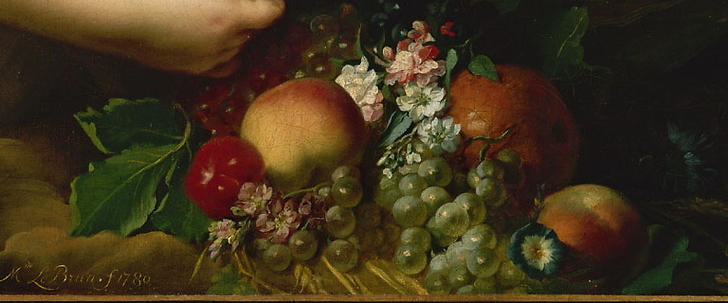
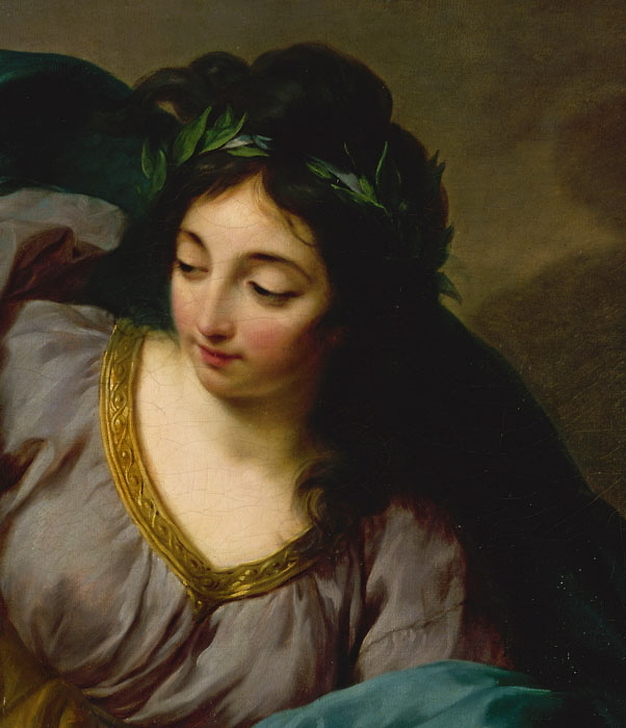
Peace Bringing Back Abundance
While her portraits of the Queen of France have marked the history of painting, Peace Bringing Abundance remains one of her most famous works. This canvas was produced for her entrance portfolio for the Royal Academy of Painting and Sculpture in 1783. The painter dared to present Abundance as a young blonde woman with an uncovered breast, defying all the rules in force at a time when the academic nude was reserved for men. Peace is represented here in a brown tunic and a blue coat, accompanied by her traditional attributes - the laurel wreath and olive branch. By taking on a symbolic subject, Elisabeth Vigée Le Brun proved that she was not only a portraitist, but also a painter of History.
Did you know ?
Elisabeth Louise Vigée Le Brun is Marie-Antoinette's official painter

